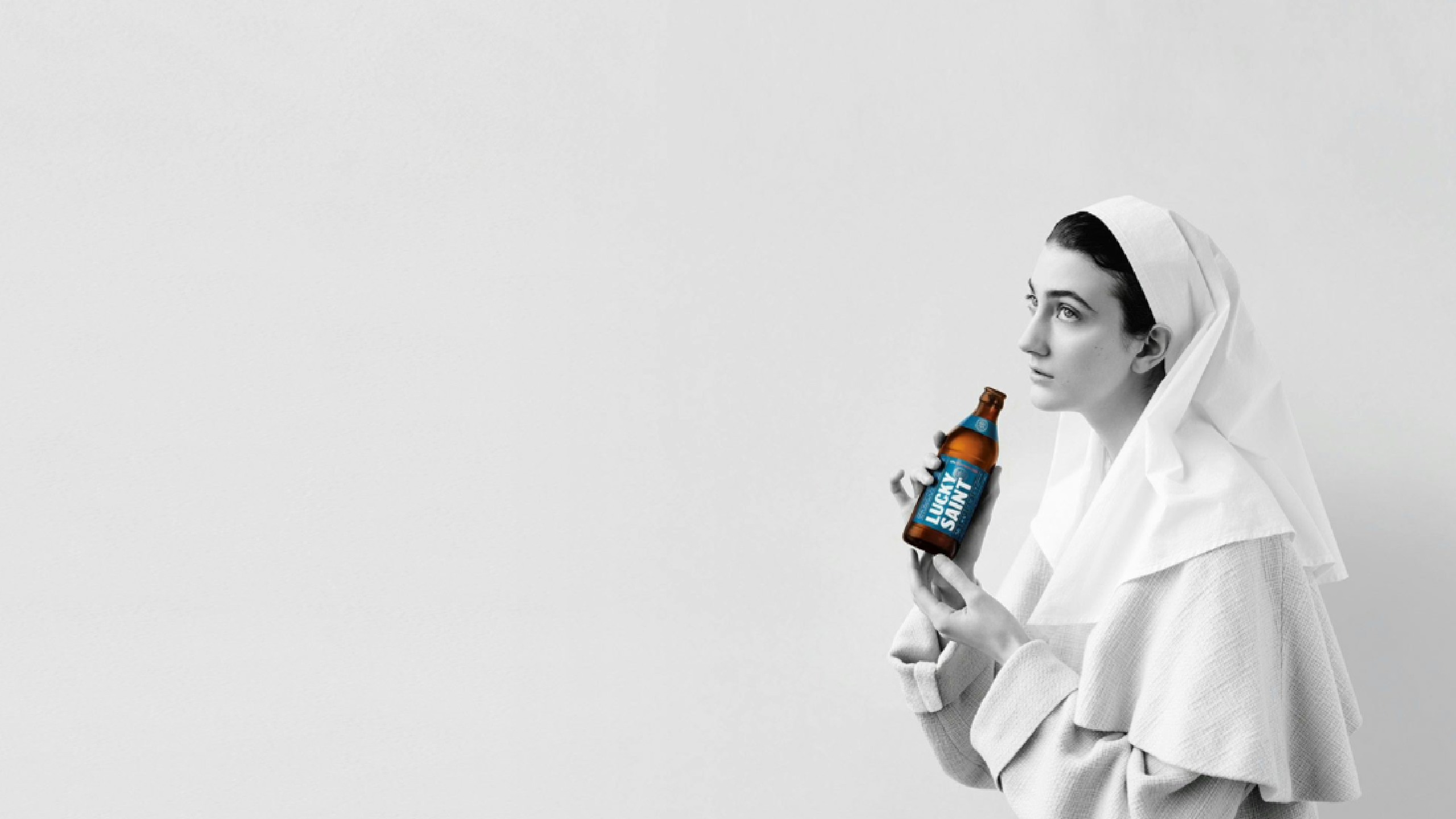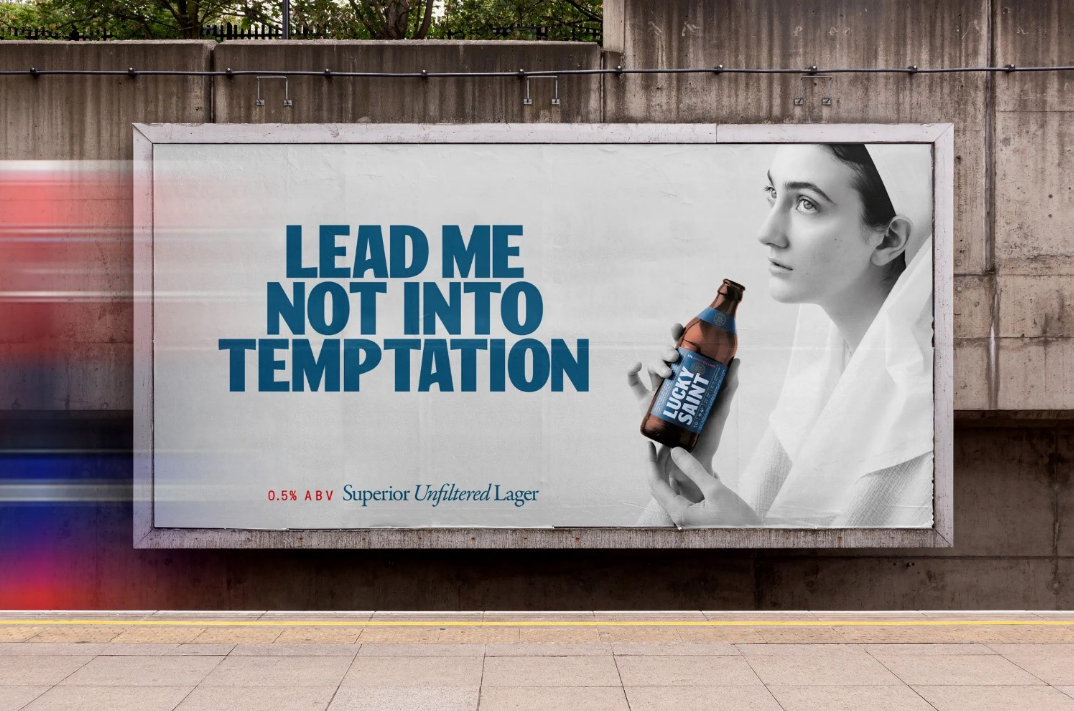From Zero to Hero: The Rise of 0% Beer

A century ago, the roaring 20s were defined by jazz, celebration, economic boom and prohibition. Speakeasies emerged, bootleggers thrived, and despite the law, demand for alcohol didn’t disappear. Prohibition may have made it illegal, but it never made it undesirable.
Fast forward 100 years, and the context has changed. While overall alcohol consumption continues to grow globally, younger consumers are shifting behaviour. Enter Gen Z. As a Gen Z myself, I’ve noticed drinking feels far less embedded in the social fabric of today’s 18 to 24-year-olds. The pandemic disrupted nightlife, kept us out of bars and clubs, and accelerated a more health-conscious mindset. And it’s not just anecdotal. In the space of two decades, the percentage of under-35s who drink has dropped by 10%, from 72% in 2001 to 2003 to 62% in 2021 to 2023.
But that trend isn’t linear. Recent data suggests alcohol consumption is creeping back up among Gen Z, particularly in the US. And that’s where the tension lies for brands. How do you navigate changing attitudes without alienating either side?
Consumer behaviour rarely moves in a straight line. It swings, adapts, rebounds. So, while brands without a 0% option may have felt the pressure a couple of years ago, today tells a more complex story. What matters now is flexibility. The ability to meet people where they are, cater to multiple moments and shifting social cues. Legacy beer brands have already caught on. Most now offer 0% variants, while disruptors like Lucky Saint, Seedlip and Athletic Brewing are building serious equity in one of the most established categories in the world.
The question is, how do you position these products? How do you make your brand the natural choice for non-drinkers or the sober curious?
In a category steeped in heritage, emotion, music and culture, 0% products still need to show up with the same brand magnetism as their alcoholic counterparts. They can’t feel like an afterthought. We turned to System1’s Test Your Ad Competitive Edge ad database, featuring more than 100,000 ads, to explore how brands are building emotional connection in this evolving space, because functional isn’t enough. The winners are the ones who tap into identity, community and storytelling, regardless of the ABV.
Emotion on Tap
In the UK, Beer & Cider averages 2.7 Stars (long-term brand building potential), comfortably above the national average. In the US, the category performs in line with all advertising, scoring 2.3 Stars. This suggests that the emotional pull of the category remains strong, largely due to the fact that drinking is inherently social. It’s about time spent with friends, being outdoors, celebrating moments. All of these are deeply human, emotionally resonant behaviours that naturally enhance product appeal.
Brand recognition, however, tells a different story. Scores sit at a modest level in both markets. Beer & Cider is a crowded space, saturated with long-standing, iconic brands that have distinctive brand codes, bottle shapes, colour palettes, logos and creative styles. It is highly competitive.
The good news is that many brands advertising 0% alternatives are getting the emotional side of the story right. These campaigns often lean into the same familiar tropes that define the Beer & Cider category. On average, the 0% beer category achieves a 2.8 Star Rating, outperforming its alcoholic counterparts.
This matters. The 0% category originally launched with a major challenge: taste. Many consumers were hesitant to make the switch, as early products didn’t replicate the flavour of the beers they knew and loved. It felt unfamiliar. In response, brands have leaned into familiar marketing cues to frame this unfamiliar product in a way that feels safe, social and appealing, helping to lower barriers and encourage trial.
However, much like the full-bodied Beer & Cider category, 0% has a recall problem. On average, 17% of consumers cannot remember which brand the ad was for. For marketers, this is a real challenge. While emotional resonance is strong, brands risk losing out on emotional attribution and, with it, long-term commercial impact. In many cases, that value is either going to the 0% category as a whole or, worse, straight to a competitor.
So how can brands brew the perfect 0% ad, whether as a long-standing heritage name or a disruptor hoping to hop in and shake up the barrel?
0 to 100% Funny
One of my all-time favourite 0% ads is Heineken’s 2018 “Now You Can.” It’s a clever, comedic spot featuring a man sipping a Heineken in his parked car, only to be approached by a police officer. He confidently shows the officer his 0.0 bottle, only to be handed a ticket for parking. The message is clear: 0% beer lets you do things alcoholic drinks wouldn’t. Want to enjoy a crisp, refreshing beer while driving? With 0%, you can. Designated driver? No booze, no problem.
What makes this ad particularly effective is its standout brand recognition. An impressive 91% of viewers knew it was Heineken. The reason? The 0.0 bottle is designed to mirror the original, with the same shape, colour, and unmistakable brand assets. This isn’t just good design, it’s smart behavioural thinking. People like to blend in. If you’re the only one in the pub with a visibly different bottle, switching to 0% can feel a bit awkward. But when the bottle looks identical, that barrier disappears.
Other brands have followed suit. Lucky Saint serves its 0% on tap. Liquid Death puts water in beer-like cans. And big names like Corona, Guinness and Heineken all keep their alcohol-free bottles visually aligned with the originals. This isn’t just about fitting in socially. For heritage brands, it’s a no-brainer. Leaning into your existing assets drives recognition, builds memory structures and helps make your 0% variant the easy, obvious choice.
Humour plays a big part here too. Heineken uses it to flip a cultural taboo and build both brand equity and sales impact. Lucky Saint takes a similar approach with its “Drink Religiously” line, cheekily playing on the idea of beer as a vice. Guinness also got in on the act with a comedic twist on the classic song “Holding Out for a Hero,” swapping the lyrics for “Holding Out for a Zero.” These light-hearted, tongue-in-cheek executions don’t just entertain. They strategically reframe alcohol-free drinking as something fun, confident and socially normal.
This tone is a smart move. As Orlando Wood points out in Lemon and Look out, humour in advertising has been on a steady decline. That means brands that lean into it are more likely to stand out, not just in the 0% space but across the wider beer and cider category and the industry as a whole.
Behavioural science tells us humour makes things stick. So, for brands looking to rise above the sea of golden liquid, a sharp line might be the sharpest tool in the fridge.
Brands Aren’t Built in a Day
When you think of the world’s most recognisable brands, who comes to mind? McDonald’s? Amazon? These names rise to the top not by chance, but through years of consistent brand-building.
In alcohol, the story is no different. Baileys stands out as one of the most distinctive liqueur brands. Guinness remains arguably the most iconic name in beer. Why? Because they’ve developed and reinforced a distinctive set of brand assets over time. Colour, typography, taglines, tone, and sometimes even characters work together to create instant recognition.
In the beer and cider category, this kind of shorthand is particularly powerful. Guinness owns black and white. Heineken owns green. Birra Moretti transports us with imagery of sunlit Tuscan hills. These codes aren’t just aesthetic choices. They are memory triggers that keep the brand top of mind when it’s time to choose a drink.
Interestingly, beer has largely stayed away from characters or mascots. Instead, brands tend to focus on moments and lifestyle cues. That creates an opening. For 0% alcohol brands, which are still building mental availability, the opportunity to stand out is even greater.
Enter Lucky Saint.
From day one, Lucky Saint has committed to consistency. A distinctive colour palette. A witty, consistent tone of voice. A clear positioning. And a recurring female character that anchors the campaign.
When the brand first tested with UK consumers using System1’s Test Your Ad platform, Fluency Rating (brand recognition) achieved a modest 53%. Some might have abandoned the campaign, thinking it hadn’t landed. But Lucky Saint took a different path. They stayed consistent, knowing that brand memory takes time to build.
Two years later, that decision paid off. Lucky Saint’s Fluency Rating has improved by 27%. This is a significant uplift achieved not by changing the creative but by staying the course. The result echoes recent findings from System1 and the IPA’s Compound Creativity research, which shows that brands with consistent creative assets see stronger brand distinctiveness, larger brand effects and greater commercial impact over time. For any brand looking to challenge the brewing giants, that kind of long-term return is a commercial gold mine.
The takeaway for marketers?
In an emerging space like 0% alcohol, where the rules are still being written, it’s tempting to chase novelty. But the brands that succeed will be the ones that commit to building and reinforcing distinctive brand assets over time.
Characters, colours, taglines, tone. These are not surface-level decisions. They are long-term investments in memory and future market share.
Because whether you’re building a multinational brand or a new contender in a growing category, one truth remains. Rome wasn’t built in a day. And neither are great brands.

Create with Confidence
Whether you’re a disruptor brand looking to break into one of the most established categories or an industry leader launching your own 0% beer range, the right creative approach can make all the difference. Our proven principles help you land your brand, resonate with audiences, drive immediate interest, and lay the groundwork for long-term growth.
Ready to go from zero to hero? Get in touch with our team today and stay tuned for Part 2, where we dive into the behavioural principles that drive lasting impact.
